 Kriegsmarine (1934), U-26, 27, 28, 29, 30, 31, 32, 33, 34, 35, 36
Kriegsmarine (1934), U-26, 27, 28, 29, 30, 31, 32, 33, 34, 35, 36WW2 U-Boats:
Seeteufel (1944) | Type Ia U-Boats (1936) | Type II U-Boats (1935) | Type IX U-Boats (1936) | Type VII (generic) | VIIA | VIIB | VIIC | VIIC/41 | VIIC/42 | VIID | VIIF | Type XB U-Boats (1941) | Type XIV U-Boats (1941) | Type XVII U-Boats (1944) | Type XXI U-Boats (1944) | Type XXIII U-Boats (1944) | German mini-subs and human torpedoes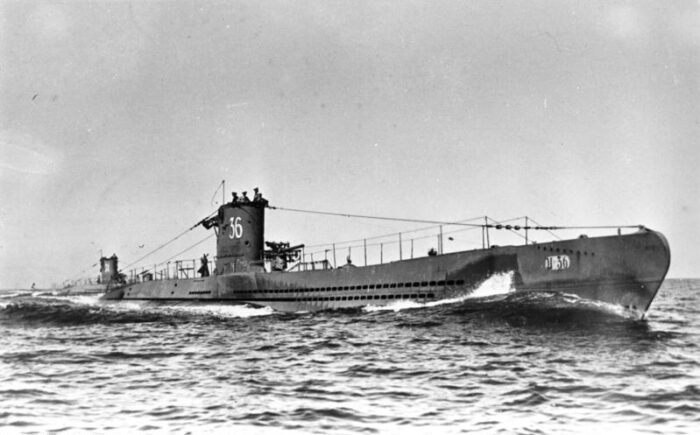
With the Type VIIA we start a new cycle “in depth” about the Type VII the most produced submarine in history, most famous U-Boat of WW2. In these series of articles, we will dive deeper into the nitty-gritty details of the successive series concerned, the VIIA, B, C, C/41, C/42 and projected C/43, a well as the rare VIID and VIIF. This is notably to try to start to split and cover the individual career of ALL these 700+ submarines, accounting for the bulk of the 1,043 U-Boats in service during the second world war. https://naval-encyclopedia.com/ww2/germany/type-viia-class.php #kriegsmarine #germannavy #ww2 #uboat #uboote #typeviiuboote #submarine
IvS at the Hague as a starting point
Roots: The 1919 Versailles Treaty interdiction
The design of a standard U-Boat, despite the Versailles Treaty interdiction, was very much in the minds of the Reichsmarine admirals in case of a new war. It was notably theorized in 1920 already that many loopholes in the interdiction existed that allowed to work on these designs anyway. Section II.—Naval clauses (Art. 181 to 197) of the Paris Peace Conference, 1919, Volume XIII indeed eliminated Germany from the competition in naval armament, notably from the Washington treaty signed a year later.

Birinci Inonu, first UB-III derivative designed at NV Ingenieurskantoor voor Scheepsbouw.
The interdiction was partly specified in Article 181 in which the German naval forces in commission were limited to 6 battleships (defined), 6 light cruisers, 12 destroyers and 12 torpedo boats with replacement possible for the latter as part of the Article 190. And “No submarines are to be included”. The ones in existence were to be ceded to the allies as well as dedicated docks and salvage vessels as per article 188. Machinery and material exploitation was tolerated for purely industrial or commercial purposes as per article 189.
But the most precise and in-ambiguous were the famous Article 191.
The construction or acquisition of any submarine, even for commercial purposes, shall be forbidden in Germany.
(May 7 addendum)
The construction and acquisition of any submarine (…). The term was to close any possible loophole at this stage, like leasing a submarine built in the treaty provisions, for example, Netherlands or Sweden, and designed there by German engineers.
The Hague cover Operation
In previous articles, we saw the beginnings of the Dutch cover design bureau at The Hague, notably the Turkish submarines and Finnish ones, which prepared the venue for the smaller Type I, II and III U-Boats. The Type I (basis for the future Type IX) and Type VII also found their roots in this program. To recall what it was about, NV Ingenieurskantoor voor Scheepsbouw was created in 1922 and founded partly by the Reichstag and via cover companies, owned and operated by Vulkanwerft (Hamburg) and A.G.Weser/Krupp (Bremen) as well as Germaniawerft/Krupp (Kiel). The design team called “Inkavos” was led by Dr. Hans Techel, and its financial support provided in complete secrecy by the German navy, eager to retain its abilities. Secretly financed, IvS started to find new customers by the services of its best salesman at the time, Admiral Ernst von Gagern, making a first sale happen with Turkey.
The Type UB-III of WWI (1917) was also the most prolific (90 boats built) and successful of German U-Boats in WW1. These 500-650 tons boats were 55,3 x 5,8 x 3,7 m. Their range was 13,300 to 16,700 km, they can dive to 50m, had five TTs, one or two 10.5 cm guns, could run at 13,5 knots in surface and 7,5 knots submerged.
The Turkish Inönü class (1927)
This first experience consisted in creating a new design heavily based on the UB-III class submarines, in WWI, the most produced and best balanced of German U-Boote. It became the great standard and was seen by many in 1918 and the most successful of all WWI U-Boats. The Birinci and Ikinci Inonu (first and second battle of Inönü of 1921 over the Greeks) were the result of this first sale. The submarine was designed at the The Hague, and since Turkey lacked a modern shipyard to build these in 1927, it was agreed they would be built by the Netherlands as well, at
Rotterdam Naval Yard. The deal, in which the design was paid for by the Germans in large part, while the construction was paid by the Turkish government, included clauses in which Germany would own the plans and more importantly, sea trials in the Netherlands were assisted by German engineers and officers in civilian attire, as well as Turkish delegate, with the final plans and detailed reports smuggled back into Germany inside diplomatic briefcases to Krupp.
At this stage, some features were improved compared to the UB-III, but the essentials were still very close to the UB-III, so its utility was mostly to give engineers there the skills to go further. It was more a team building exercise rather than a breakthrough in design. However, later design at IvS were more instrumental in the development of the Type VII.
The Finnish Vetehinen class (1930)

Vetehinen class: Note the hull shape are more rounder thanks to the mine wells and ballasts pushed outwards.
Right after the Turks obtained their design, another design was also experimented by IvS engineers to rebuilt skills, this time based on arguably the best and most balanced minelayer submarine of WWI, contemporary of the UB-III, the UC-III class: The Vetehinen class. Finland in 1927 wanted indeed a combined coastal patrol and minelayer submarine, and the offer was submitted on the international market, picked up by salesmen at IvS and soon a deal was obtained, in which again, designs cost will be covered by Germany, construction would be financed by the Finns and done at Turkü, Crichton-Vulcan drydock, with German assistance. In the end, the path chosen was a blend of UB-III and UC-III features, and a more interesting exercise as far as designed went, another crucial step in the Type VII ancestry. As sad above, Finland also helped Germany to design a coastal class of submarine, with the Vesikko being used as the blueprint for the Type II U-Boat.
The Spanish E-1 for Turkey
The development of Spanish Submarine was a hit-and-miss affair, since many years and in fact Spain was one of the few pioneers of this type, with men such as Narcís Monturiol in the 1850s, Cosme García Sáez in the 1860s and Isaac Peral in the 1880s. However, the trouble history of Spain and lack of political will, or vision, limited the adoption of submarines, and the first operational class was made of modified Holland class boats built in Spain. The A class of 1917, B class of 1922 and C class of 1928. In short, Spain built German designed submarines, but only in an attempt to continue to circumvent allied suspicions about Germany trying to circumvent the interdiction on submarines.
So, when Turkey needed a new submarine after the Inönü, it was proposed to designed it at IvS again, but build it in Spain to avoid repeating the “designed and built in the Netherlands” scheme that already raised some eyebrows in the eyes of naval analysts of the time. The Inönü indeed looked like nothing of the Dutch submarines at the time, and was very much a clear-cut copy of the German UB-III. However, under international law, nothing prevented the Netherlands to build an UB-III for Turkey.
So the design bureau of Kneuterdijk moved to a brick art deco building on the Gedempte Burgwal 1, in the middle of the Jewish quarter of The Hague, to evade inspections. There was not even a plaque, and instead just a discreet letterbox.
The first assignment under tha new address was the design of two submarines for Spain, the Argentina, again related to the type UB III of the Kaiserliche Marine, but it petered out. Fijenoord would build the submarines under licence from Krupp for Spain, Turkü for Finland, and the new one was agreed to be built in Spain, for Spain. This was for a rather authoritarian regime, under PM Miguel Primo de Rivera. A contract for the E1 (later renamed “Gur” when repurchased by Turkey) was secured and engineering team from IvS sent to the relatively small yard of Echiverria y Laringa, Cadiz in 1928, to start working on this new submarine, a much larger fusion of previous experiences, at 750/960 tonnes and 72.42 meters long. Construction proceeded until she was laid down on 25 March 1929, launched on 22 Oct 1930 and had her sea trials, post-completion, in May 1931. However, the second Spanish Republic was declared, and a complete shift of politics was done.
The new regime was against this new submarine they knew was designed in Germany, and wanted a rapprochement with France and Britain. So the new submarine, now just completed and successfully in trials, was put on sale by the Cadiz Yard and via the intermediary of IvS, resold to Turkey, renamed “Gur”. She would see service until the 1950s.
In between, in 1930 Sweden ordered three 540-ton mine laying submarines from Kockums Mekaniska Verkstad (The Delfinen class) were also designed by IvS built built in Sweden, under Swedish standards and methods.
In 1931, the newspaper Het Volk published an article about submarines manufactured by the Utrecht factory M.E.A.F. to designs by IvS for sale ‘abroad’. Here, too, it was mentioned that IvS was in German hands. The allies now started to be nervous.

However, the E1 was rather a “sidetrack” development path mostly modelled on Spanish views, and was larger than the 50m+ envisioned by Germany as medium oceanic types. It was helpful to determine if a 70+ meters long design with a deck gun relocated in the conning tower made sense, as it was very much a trend at the time. Outside the CT, many features of the hull, inside and outside, would find their way on the Type VII. Francoist Spain would later benefit of Italian submarines, even hosting at some point German U-Boats, and starting construction in 1942 of the Type IX inspired “D” class, only completed postwar.
The type VIIA development
The Type-VIIA theoretical development went back as early as 1933, when the specs, range, armament, ease of manufacture, and required manpower settings were all chosen. All the previous design experience gained with IvS went into its technical details, but it remained a project until a breakthrough was made with the Anglo-German naval treaty of 1935. The tonnage requirement set stated that the German Kriegsmarine could have 35% of the tonnage of the Royal Navy (1930 London treaty). This also, de facto, freed Germany from the other limitation of the Versailles treaty on the ban on submarines. Now, they could be built, provided they stayed under the Washington and London treaties limits. The Type-VII therefore had to be relatively small to be built en masse before meeting the 35% tonnage ceiling for submarines.
Thus, this opened the gate for new designs. In 1935 still, the submarines publicly announced looked relatively innocuous, for defensive purpose only: This was the role of the Type IIA submarines. They were launched the same year as the treaty, meaning they were laid down and construction started when the Versailles treaty was still operating, a flagrant interdiction. Apart these six subs commissioned in 1936 there were the nineteen of the improved IIB, same coastal type.
They were presented as defensive subs for the Baltic in order to not draw too much attention. But in parallel and without fanfare were built two designs, one closely derived from the Spanish E1 (later Turkish Gur), the Type IA, only two experimental boats, ancestors of the Type IX large oceanic boats. And the same year the second medium oceanic design was started, the Type VIIA. If the Type UB III provided still the main base, it defined a double-hull type. But what made the Type VII A unique for the Type VII at large, was they were the only German U-boats built after World War I with a stern torpedo tube above the waterline. Even with the UG type as distant ancestors, it drew extra design perks from other export submarines from IvS:
The Delfinen class was laid down in 1933 and launched in 1933-35 Kockums Mekaniska Verkstad in Malmö and quite similar in size to the final model, at 63.1 m x 6.4 m but for a light displacement of just 540/720t. Plus, they only had two bow and two aft torpedo tubes due to the minelaying capacity (20 mines).
On the other hand, there were the Russian S1 class (three subs built 1934-38 at Ordzonikidze in Leningrad). They were a smaller variant of the E1 design, and at the other hand of the spectrum at 77.75 m x 6.4 m x 4.04 m with enough diesel power for 4000/1100 hp and four bow tubes, two stern. In many ways they were closer as to the Type IA than the Type VII.
The cancelled Type UG type in particular was the Type VII main inspiration. In 1933, engineers at Krupp just had to recover older WW1 project blueprints and start from this. The type UG was designed through the famous interwar dummy company Ingenieurskantoor voor Scheepsbouw Den Haag in the Netherlands to bypass the Treaty of Versailles interdiction but found no customers, at least as it was. The final Finnish Vetehinen-class and Spanish Type E-1 were both variants of the same design. The Type VII were at first conceived as a mix between the Vetehinen and the E1 or Type I built in AG Weser shipyard in Bremen, further refined in 1934 to develop either the Type VII.

Type VIIA in line astern training in the Baltic, 1937 (reddit)
Apart the difference in size (200 tonnes difference), the Type VII (later renamed retrospectively Type VIIA in 1939) had one less torpedo tube in the stern. So a total of five tubes, including four in the bow, which was considered the maximum that can be safely operated from the pressure hull. Same for the Type I. However, since the pressure hull was narrower aft, there was no place for two tubes, not even a reloadable tube from the pressure hull. It was not-reloadable and located above the waterline, a “one-trick pony”. The number of torpedoes that could be carried was eleven, due to their presence in the bow only, four already preloaded in the tubes and six spares, stuffed into the sides of the torpedo compartment. In all these models the reloading operation was not that different from WWI models, it was all hand-operated with cranks, chains and pulleys. A long and sometimes dangerous job if the boat was unstable.
The design of the Type VII was shared between AG Weser, the same responsible for the Type IA, and D. Krupp in Germaniawerft. Construction was shared between the two, ten boats in all approved in 1935 and ordered the same year, six laid down at the first at Werk #908-913 and four at Krupp, werk #556-559. The latter were completed faster, in 1936. The Weser boats were completed in 1936-37. Meaning, in September 1939, they had about two-three years of training.
More importantly they were the trailblazer for the Type VII, their sea trials were of immense importance, and all was done in secret, by night if possible. Reports were carried by agents in special security wallets. They showed a number of issues that were corrected on the Type VIIB, laid down afterwards.
Design of the Type VIIA
Hull & General layout
The Type-VIIA had a length of 212 feet (65 meters), a draft of 15 feet (4 meters), and a beam of 19 feet (6 meters), with a displacement of 626 tons while surfaced and 745 tons while submerged. This was later judged too small, as a requirement for more range imposed the hull increase in size. As per design specifics, they had a specific conning tower that looked like a reduced version of the Type IA
Shipyards and Supply Chain
The construction, outside the yard cited above, Deschimag Bremen and Germanaiwerft Kiel, rested on a network of suppliers that for many, had a monopoly on their product. Let’s cite: –Electrical engines: Allgemeine-Elektrizitäts-Gesellschaft (AEG, Berlin), Brown, Boverie & Co. (BBC, Mannheim) and Siemens-Schuckert AG (SSW, Berlin)
Batteries: By the former Accumulatoren Fabrik AG (today VARTA/VHB, Hagen)
Diesels: Maschinenfabrik Augsburg-Nürnberg (MAN, Augsburg) which needs no introduction.
Watch and Attack periscopes: Zeiss works in Jena. The also provided optics for tanks and antitank guns, famous for their long range accuracy.
Main deck gun: The 8,8 cm was manufactured by Krupp
Torpedoes: The G7 since WWI were designed and manufactured by the Kiel arsenal. They were tested by the Torpedo Trials Institute at Eckernförde.
Powerplant
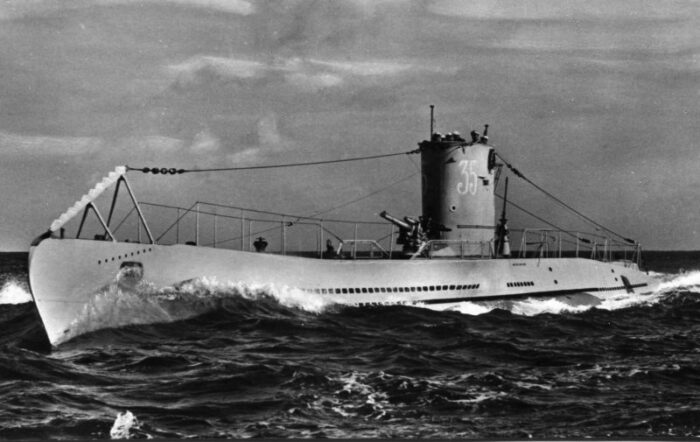
The Type VIIA was powered when surface-running by two MAN AG, 6-cylinder, 4-stroke M6V40/46 diesel engines rated for 1160 bhp each. They gave a total of 2,300 brake horsepower (1,700 kW). When running underwater, they were propelled by two Brown, Boveri & Cie (BBC) GG UB 720/8 double-acting electric motors rated each for 375 shp. for a total of 750 horsepower (560 kW).
Top speed was thus 16 knots surfaced and 8 knots underwater.
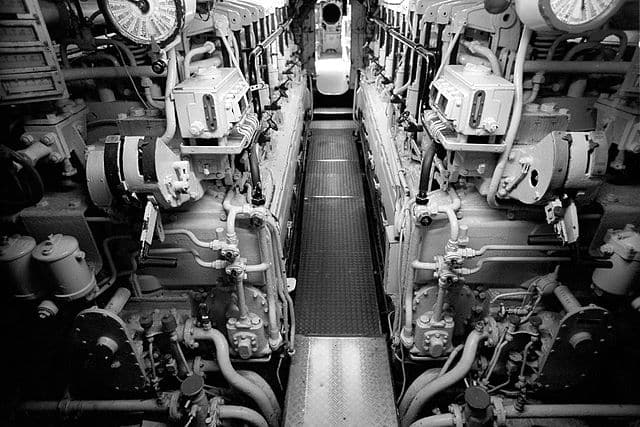
Diesels room
The new type steel developed for the Finnish submarines helped to resist far deeper dives than any other submarines of the time, and it was one of the master aces of the Type VII for survivability. Test depth was at first around 180-200 m (650 ft) but on the Type VIIC it grew to 230 m (750 ft) with a final calculated crush depth of 250–295 m (820–968 ft). To compared, with its small size, the Type VII could dive deeper than any other submarine in service at the time. The vintage US S-class still in service and comparable in size could reach 60m (200 ft). The British S-class could dive to 90m (300 ft) on average. So in early service the allies were unaware of this and never set up their depth charges that low.
Armament of the Type VIIA
Deck Gun: 8.8 cm/45 (3.46″) SK C/35
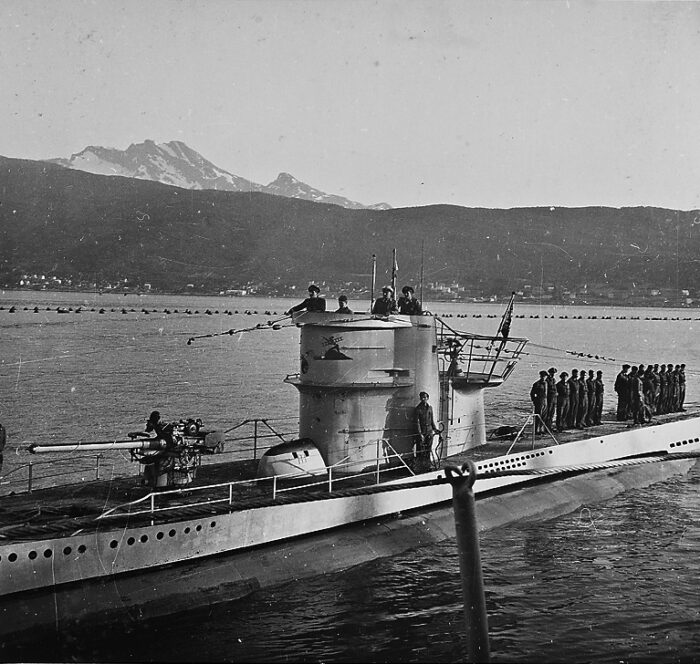
The type VIIA U-boats had the 8,8cm as deck gun. The Type IA and later Type IX had the larger 105 mm deck gun, and the small Type II had a 20 mm AA gun. This deck gun was produced by Krupp but had absolutely no relation to the famous German Army 8,8 anti-tank and anti-aircraft gun. They did not even share the same ammunition. The 8.8 cm/45 (3.46″) SK C/35 was also used on Type 40 minesweepers and sub-chasers. After 1942, many U-Boats had it removed to install more FLAK instead. Only in the Mediterranean and the Northern Sea boats kept their guns for a few months longer.
This was a pure “marine guns”, with material resistant to corrosion, simpler mechanisms and lubrication was limited or made internal. The goal was to have a permanent deck gun that could stay very long periods underwater at great pressures that could damage mechanisms and smaller parts. It was tested in a pressure chamber to the equivalent to around 200m (650 ft) which was the max theoretical diving depth at the time. These constraints made for a completely different gun than the more complex land-based 8,8 cm FLAK gun.
The 8,8 cm caliber had been used for many decades in the German Navy, all the way back to the 1890s and saw many iterations over the years. Unlike its land-based counterpart, it was a pure anti-ship model as it was limited by its mount to 30°.
The model used on the Type VIIA and following was designed in 1935 and introduced in 1938 so it’s likely the Type VIIA U-Boats were completed without it. It was a very rugged gun, albeit not having the same punch as its land counterpart, and a AP round (AP 35) which was far weaker. At 700 mps (2,300 fps) versus 840 m/s (2,690 ft/s) it lacked the speed and range as well, but was very impressive an efficient as a naval gun, especially for such as “small” submarine. It’s just that from 1942, no U-Kaptain would be mad enough to try to sink a cargo while surfaced with this single gun, staying exposed for an hour or more. More
Specs 8.8 cm/45 (3.46″) SK C/35
Weight: 5,346 lbs. (2,425 kg), Barrel alone 1,711 lbs. (776 kg)
Lenght: 157 in. (3.985 m) bore 146.9 in (3.731 m).
Rate of fire: 15 rounds per minute
Shell: 33 lbs. (15 kg) 14 in (385.5 mm) HE, AP, Incendiary, Illumination (90-10.2 kgs).
Busrting charge: AP 35S 0.064 kg. HE L/4.5 0.698 kg, HE L/45 Inc. Brandkörper A
Propellant charge: 3.70 lbs. (1.68 kg) RP C/32, 3.90 lbs. (1.77 kg) RP C/38, 4.63 lbs. (2.1 kg) RP C/40N and PL/V41
Muzzle velocity: HE 2,300 fps (700 mps), Illum.: 1,970 fps (600 mps).
Range: 13,070 yards (11,950 m) at 30°. Depression -10° on Ubts LC/35 mount.
Ammunition stowage Type VII: 220 rounds.
Barrel life: 12,000 rounds.
Torpedoes

For the Torpedo tubes I-V, Piston was 70 kg, forward +25.25 with piston inserted, 1680m3 and aft: -26,15 without piston and 1740m3. There was an upper deck container forward and aft, with and without G7A. Torpedo in the tubes were the G7E/G7A models. There was also a reserve stowage forward, aft.
G7A Torpedoes
Direct involvement of Spain in the development of German torpedoes started in the late 1920s when the Spanish businessman Horacio Echevarrieta decided to start a torpedo factory in Cádiz (Fábrica Nacional de Torpedos, F.N.T. / National Torpedo Factory) with a theoretical production capacity of 100 torpedoes per year and license-build German torpedoes. But the G7 was created in WWI. The lineage comprised the pre-WWII G7A (T1) using compressed air and thus leaving a visible trail of bubble.
https://en.wikipedia.org/wiki/G7a_torpedo
The G7a (TI) torpedo calibre was the standard 533.4 mm (21 in), for a length of 7163 mm (23 ft 6 in), fitted with a Ka or Kb warhead, Pi1 or Pi2 pistol. The warhead carried 280 kg (617lbs) Schießwolle 36. The model remained standard issue from 1936 to the end of WW2. This model was of a straight-running unguided model only controlled by a gyroscope. It could be set at a variable speed, 5,000 m at 81 km/h or 7,500 m at 74 km/h (8,250 yd at 40 kt) but also “long course” 12,000 m at 55.6 km/h. The 44 knots model setting was only used by Schnellboote with a reinforced engine.
Later were introduced the G7a (T2) electric, T3, T4, T5 (Zaunköning), and T11, but the latter remained a prototype.
In 1940-41, the Type VIIA were likely upgraded with the G7a T2:
G7E Torpedo (T2)
They had a unique setting of 5000m at 30kts. Standard torpedo of the war, it suffered from early issues with the internal depth-keeping equipment and firing pistol, solved after the Norwegian Campaign. Full effectiveness on the T2 was obtained when preheated electrically to 30 degrees Cent (86 F) before firing. If not, speed was down to 28 knots for 3000m.
G7E Torpedo (T3)
By mid-1942 the improved version had an increased battery capacity, asking for a 50% superior range as the T3a. Range was now, 7500m at 30 knots, but in a preheated state it was 4,500m at 28 knots. More detail to come for the next articles on the Type VII.
TMA Mines
In alternative to their torpedoes, the Type VIIA U-Boats could also carry 22 TMA mines, for a ration of two for one. The Type VIIs did managed many minelaying missions, but the size of their individual minefields was fairly limited, so losses were few, but not absent. The TMA mines were shaped as cylinders, they were moored mines, attached by cable to float above the surface, while the anchor secured its position. The correct depth setting needed to be applied depending on the observed depths. Two could be carried in each torpedo tube.
Length/Diameter: 11.1ft (3.38m)/21in (533mm)
Maximum Depth: 270m
Warhead: 215kg.
Sonars
Gruppenhorchgerät
The GHG was an early acoustic system, a hydrophone array used on all models, including the Type VII. It was developed in WWI already following Pierre Curie discovery in 1880 using the piezoelectric principle. Atlas Werke AG in Bremen and Electroacustik (ELAC) in Kiel worked on transducers, detectors and amplifiers and found the best being the Seignette crystal formed from a mixture of different salts. From 1935, crystal receivers were permanently installed on German submarines.
The GHG was the final product, GHG made of two groups of 24 sensors, one on each side of the boat. Each sensor had a tube preamplifier. These 48 low frequency signals were routed to a switching matrix and the sonar operator could determine the side and direction of the sound source. To improve resolution, a frequency of 1, 3 and 6 kHz could be setup. There was however a dead zone of 40° fore and aft, but range was 20 km to individual ships and 100 km against a full Convoy.
The Search area was 2 × 140° with a resolution of less than a degree at 6 kHz, 1.5° for 3 kHz, 4° for 1 kHz and without crossover 8°.
The Royal Navy in May 1942 captured a submarine and its ELAC equipment. Later the Balkongerät was tested on U-194 in January 1943 and installed a few Type VII/41 or 42 but became standard on the Type XXI.

More HD Profiles awaited.
⚙ specifications |
|
| Displacement | 626 tonnes surfaced, 745 t submerged |
| Dimensions | 64.51 x 5.85 x 4.37 m (211 ft 8 in x 19 ft 2 in x 14 ft 4 in) |
| Propulsion | 2 shafts, 2,070–2,280 bhp diesels, 740 shp electric |
| Speed | 17 knots surfaced, 8 knots submerged |
| Range | 6,200 nmi (11,500 km)/10 knots surfaced, 73–94 nmi/4 knots submerged |
| Depth | 220 m (720 ft), CD 230–250 m (750–820 ft) |
| Armament | 5× 533 mm TTs (1 stern) (11 torpedoes)/22 TMA/33 TMB mines, 8.8 cm deck gun, twin 2 cm C/30 AA |
| Sensors | Gruppenhorchgerät |
| Crew | 4 officers, 40–56 enlisted |
VIIA in service

 U27
U27
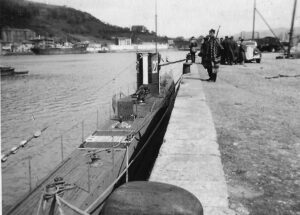 U27 was ordered on 1st April 1935, laid down on 11 Nov 1935 on AG Weser, Bremen (werk 908). She was launched on 24 June 1936 and commissioned on 12 Aug 1936 under the 2. Flottille and Korvkpt. Hans Ibbeken until 4 October 1937. He was replaced from 5 October until 5 June 1939 by Kptlt. Johannes Franz, still training.
U27 was ordered on 1st April 1935, laid down on 11 Nov 1935 on AG Weser, Bremen (werk 908). She was launched on 24 June 1936 and commissioned on 12 Aug 1936 under the 2. Flottille and Korvkpt. Hans Ibbeken until 4 October 1937. He was replaced from 5 October until 5 June 1939 by Kptlt. Johannes Franz, still training.
From 6 June 1939 until 8 July 1939 she operated under Kpt. Hans-Georg von Friedeburg (German Cross, Silver). From 8 July 1939, U27 was commandeered by Kptlt. Johannes Franz 20 September 1939.
Her first patrol started from 31 August 1939 20 Sep 1939, sinking two ships sunk for a total of 624 GRT. An early kill, she was sunk on 20 September 1939 west of Hebrides, by depth charges of destroyers HMS Fortune and HMS Forester. She managed to surface and surrender, with all 38 member of the crew rescued and made POWs.
 U28
U28
U28 was ordered 1 April 1935 Builder DeSchiMAG AG Weser, Bremen under Cost 4,189,000 RM, Yard number 909. She laid down on 2 December 1935, launched on 14 July 1936, and commissioned on 12 September 1936. She had several captains in the interwar. The first patrol took place from 19 August to 29 September 1939. On 14 September near the mouth of St George’s Channel, she sank a 5,000 GRT freighter (not confirmed). He 2nd patrol was between 8 November to 12 December 1939, laying a minefield near Swansea. Underway to Bristol, she spotted and sank the 5,000 GRT Dutch tanker MV Sliedrecht and 5,100 GRT British freighter SS Royston Grange. Her minefield 60 days later sank the 9,600 GRT British freighter SS Protesilaus.
For her 3rd patrol (18 February to 25 March 1940) she laid mines off Portsmouth NyD, claiming two ships for 11,200 GRT. Her 4th patrol (8 June – 7 July 1940) on the Western Approaches saw her sinking three ships for 10,300 GRT. The Irish government asked an explanation from Germany for sinking the neutral Greek Adamandios Georgandis for Ireland, also neutral. He 5th patrol (11 August – 17 September 1940) was more successful, with two ships for 5,500 GRT then on 10 September she tracked Convoy OA 210 and at dawn on 11 September claimed two large freighters (13,000 GRT each) one 10,000 GRT tanker badly damaged. Postwar, she was only credited with a 2,000 GRT Dutch freighter, damaging a 4,700 GRT British freighter. Anyway, when back to Lorient KzS Günter Kuhnke he was awarded the Knight’s Cross. U28’s 6th and final patrol was a trip from Lorient back to Germany, marred by heavy seas and foul weather. She sank a 2,694 GRT vessel and shared credit with U-31 for SS Matina. On 15 November back to Germany there were better U-Boat types so she as relegated to training and Kuhnke transferred on U-125.
U-28 sank by accident on 17 March 1944 in Neustadt in training, passing under a dummy freighter target and her conning tower was ripped off. She was raised in March 1944, stricken on 4 August. No casualties.
 U29
U29
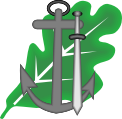 U-29 was laid down on 2 January 1936, launched on 29 August 1936 and commissioned on 16 November 1936 under Kapitänleutnant Otto Schuhart. She sank the aircraft carrier HMS Courageous, on 17 September 1939, just two weeks after the start of the war. This was the first British warship sunk by enemy action in that war and a stunning success for Schuhart in his first patrol. He was congratulated by Commodore Karl Dönitz, and Grand Admiral Erich Raeder awarded him the Iron Cross First Class, his entire crew the Iron Cross Second Class. U29 performed seven patrols, sank twelve ships for 67,277 GRT. In 1941, she was reassigned to the 24th U-boat Flotilla as training submarine, until 17 April 1944 until decommissioned used, static, for instruction. She was scuttled in Kupfermühlen Bay east of Flensburg on 5 May 1945 (Operation Regenbogen) her wreck still surveyed there in 1993.
U-29 was laid down on 2 January 1936, launched on 29 August 1936 and commissioned on 16 November 1936 under Kapitänleutnant Otto Schuhart. She sank the aircraft carrier HMS Courageous, on 17 September 1939, just two weeks after the start of the war. This was the first British warship sunk by enemy action in that war and a stunning success for Schuhart in his first patrol. He was congratulated by Commodore Karl Dönitz, and Grand Admiral Erich Raeder awarded him the Iron Cross First Class, his entire crew the Iron Cross Second Class. U29 performed seven patrols, sank twelve ships for 67,277 GRT. In 1941, she was reassigned to the 24th U-boat Flotilla as training submarine, until 17 April 1944 until decommissioned used, static, for instruction. She was scuttled in Kupfermühlen Bay east of Flensburg on 5 May 1945 (Operation Regenbogen) her wreck still surveyed there in 1993.
 U30
U30
U30 was laid down on 24 January 1936, launched on 4 August 1936 and commissioned on 8 October 1936 under command at first of Kapitänleutnant (Kptlt.) Hans Cohausz and later of Kpt.Lt. Fritz-Julius Lemp. Under him, U30 made eight patrols, sinking 16 merchant ships (86,165 GRT) one auxiliary warship (325 GRT), damaged a 5,642 GRT commercial vessel and damaged HMS Barham. She was at sea already by 22 August 1939, but started her patrols in a favourable position from 3 September 1939, 10 hours after UK declared war on Germany. He first kill was the 13,581 GRT passenger ship SS Athenia, just 200 nmi (370 km; 230 mi) west of the Hebrides (Liverpool-Montreal). She was the first ship sunk in WW2 and this made headlines. There were 1,400 passengers, 112, including 28 Americans, died. Next she sank Blairlogie and SS Fanad Head. The Propaganda Ministry promptly denied the sinking of Athenia, claiming the British torpedoed their own vessel to bring the US into the war. Joachim von Ribbentrop arranged a meeting between Erich Raeder and the American naval attaché on 16 September 1939.
After U-30 docked on 27 September, Admiral Karl Dönitz confered with Lemp, the latter “very unhappy” about the sinking of Athenia, mistaken for an AMC (armed merchant cruiser) he believed was zig-zagging. The sinking became a “total secret” and no court-martial was laid. U-30’s log were altered. This only resurfaced in the Nuremberg trials in 1946.
U30’s second patrol was off Norway, no kill. 3rd patrol started from Wilhelmshaven on 23 December 1939, in the North Sea, circumnavigating to the Irish coast and off the west coast of Scotland when she sank the 325 GRT ASW trawler HMS Barbara Robertson on the 28th, and latter that day, she spotted and torpedoed HMS Barham. Thanks to her hull blisters, she was only damaged and needed repairs, but lost four members. On 11 January she sank El Oso and on the 17th she sank Cairnoss. Her 4th patrol off Norway was in support of the operations from 15 March 1940. Her 5th patrol was again in support of Operation Weserubung, ending on 4 May at Wilhelmshaven. Her 6th patrol was a circumnavigation around the British Isles from the North Sea. In the Bay of Biscaye, briefly as part of Prien’s wolfpack (15–17 June 1940) she sank the 4,876 GRT British merchantman Otterpool on 20 June, then the 3,999 GRT Norwegian vessel Randsfjord on the 22th and British ship Llanarth(damaged) on the 28th and Beignon on 1 July, then Egyptian Angele Mabro on 6 July. She was ordered to Lorient, her recently captured new port, first German U-boat to enter the port. Her 7th patrol saw her as far south as Portugal, sinking the 712 GRT British ship Ellaroy on the 21 July. But she was soon back to Lorient due to engine issues, and then to Germany in her 8th and last patrol (Swedish vessel Canton on 9 August, British steam merchantman Clan Macphee, 16 August) to Kiel on the 30th. Lemp was awarded the Knight’s Cross of the Iron Cross and promoted to another sub. U30 was sent for fixes and used for training until 12 January 1945 as part of the 24th and 22th U-Flotille.
 U31
U31
U31 was Laid down on 1 March 1936, launched on 25 September 1936 and commissioned on 28 December 1936. Prewar, she was in the 2nd-U-Flotille until 12 March 1940, under Kptlt. Rolf Dau until 8 November 1938 and Kptlt. Johannes Habekost until 11 March 1940. Her 1st patrol was in the Baltic, in support of the invasion of Poland, no kill. Her 2nd patrol started on 8 September with U-35 to the Atlantic via the English Channel and attacking the convoy OB 4 on 16 September, sinking the steamer SS Aviemore. He later sank the Hazelside (4,646 GRT) on 24 September and ended in Wilhelmshaven on 2 October 1939. On 11 March while anchored in the Schillig Roads near buoy 12 she was attacked and took four direct hits by a Bristol Blenheim from No. 82 Squadron RAF. She sank with all her crew after being trials with 11 workers from the shipyard, 2 assistants to the flotilla engineer on board. Raised later that month, she was repaired and sent back to service on 30 July (Kptlt. Prellberg in command). She was sunk again on 2 November 1940, NW of Ireland, by depth charges from HMS Antelope. She surfaced to save the crew, and the destroyer picked up 44 survivors out of 46. Her total tally has been of 11 merchant ships (27,751 GRT), two auxiliary warships 160 GRT. She laid mines and one badly HMS Nelson.
 U32
U32
 U-32 was laid down on 15 March 1936, launched on 25 February 1937 and commissioned on 15 April 1937 under command of xxx. She conducted 9 patrols, sinking 20 ships (116,836 GRT), damaging 5 more (32,274 GRT). On 28 October 1940 under command of Hans Jenisch she sank the 42,348 GRT liner Empress of Britain, previously damaged by a German FW C 200 Condor. She became the largest ship sunk by a U-boat. She was sunk northwest of Ireland, by depth charges from HMS Harvester and Highlander on 30 October 1940. 9 were killed, 33 survived as she surfaced, surrendered and abandoned the boat, they became POWs until V-Day. British captivity for the captain ended in June 1947, unlike his fellow crewmen, due to his responsibility for the sinking of the liner Empress of Britain. In June he briefly was part of Prien’s wolfpack.
U-32 was laid down on 15 March 1936, launched on 25 February 1937 and commissioned on 15 April 1937 under command of xxx. She conducted 9 patrols, sinking 20 ships (116,836 GRT), damaging 5 more (32,274 GRT). On 28 October 1940 under command of Hans Jenisch she sank the 42,348 GRT liner Empress of Britain, previously damaged by a German FW C 200 Condor. She became the largest ship sunk by a U-boat. She was sunk northwest of Ireland, by depth charges from HMS Harvester and Highlander on 30 October 1940. 9 were killed, 33 survived as she surfaced, surrendered and abandoned the boat, they became POWs until V-Day. British captivity for the captain ended in June 1947, unlike his fellow crewmen, due to his responsibility for the sinking of the liner Empress of Britain. In June he briefly was part of Prien’s wolfpack.
 U33
U33

U33 was laid down at Germaniawerft, Kiel, on Laid down 1 September 1935, launched on 11 June 1936 and commissioned on 25 July 1936 under command of Ottoheinrich Junker, then Kurt Freiwald on 22 November and Kptlt. Hans-Wilhelm von Dresky on 29 October 1938 and until her loss. U-33 took part in Operation Ursula in support of Franco in the Spanish Civil War, from November 1936. During her short wartime career she sank 10 ships (19,261 GRT) in three war patrols. On 20 November 1939 she sank three British steam trawlers in the morning, Thomas Hankins (all near Trory Island), Delphine, and Sea Sweeper. On 21 November 1939 at 08:30, in rough seas, she sank by gunfire the trawler FD87 Sulby, northwest of Rathlin Island. The crew had time to evacuate, but half perished in the foul weather. Later she sank also the trawler William Humphries, lost with all hands.
By February 1940, under Hans-Wilhelm von Dresky, she was ordered to lay a minefield in the Firth of Clyde, Scotland. She was detected underway by the minesweeper HMS Gleaner (LtCdr Hugh Price), depth charged for hours. Eventually she was forced to surface, the crew abandoned her, and she sank soon after with 25 men trapped inside. 17 survived. The Enigma rotors were distributed amongst a few men with instruction to cast them off if caught, but the British recovered three rotors anyway, helping greatly Ultra.
 U34
U34
U34 was laid down at Germaniawerft on 15 September 1935, launched on 17 July 1936 and commissioned on 12 September 1936. She was part of the 2nd U-boat Flotilla until 30 September 1940, under Kptlt. Ernst Sobe, Harald Grosse, Hans Pauckstadt, Wilhelm Rollmann (Operation Ursula) and in the 21st U-boat Flotilla from 1 October to 1 November 1940 under Oblt.z.S. Fritz Meyer until 22 May 1941 and then blt.z.S. Karl-Otto Schultz. In her 1st patrol from Wilhelmshaven (until July 1940) from 19 August 1939 she roamed the North Sea and GIUK gape off the Faroe Islands. She entered the Atlantic on the 24th, headed south, W Ireland. On 7 September she sank Pukkastan off Bishop Rock, after stopping her with two rounds fired across her bow, surfaced, in classic prize rule style. She did the same with Kennebec SW of the Scilly Isles. She damaged and captured Hanonia and her cargo of timber off Norway, sent to Kiel and to Hamburg by a prize crew. She was back on 26 September. In her 2nd patrol, she sank Gustav Adolf, Sea Venture on 20 October, Bronte (27th), Malabar (29th) and captured Snar on 9 November.
Next she sank Caroni River in Falmouth Bay on 20 January 1940. Then she sank the neutral (clearly marked, fully lit) Greek merchantman Eleni Stathatou with 13 men dying of exposure, 20 so weak they needed to be carried ashore. The Greek government protested to no avail.
In her 4th patrol she roamed the North Sea and Norwegian Sea (no kills) but she finished off the already scuttled Norwegian minelayer HNoMS Frøya on 13 April 1940 near Søtvika. For her 6th patrol she was again in the Faroes/Shetland gap in June 1940 and entered the Atlantic. On 5 July she sank the British destroyer HMS Whirlwind west of Lands End. 24 hours later sank the Vapper south of Cape Clear (southern Ireland), then she sank on her way back the Lucrecia, Tiiu, Petamo, Janna and Evdoxia until running out of torpedoes, so she sank the small Naftilos (als Greek) with gunfire. She was rerouted to Lorient on 18 July. On her 7th patrol she sank Vinnemoor and Accra on 26 July, Sambre and Thiara on the 27th. While back to Germany as ordered, she ran into HMS Spearfish. Using her last torpedo, she sank her. The sold survivor was captured by the Germans. She was sunk at 21:55 on 5 August 1943 at Memel, Baltic, after a collision with the U-boat tender Lech. 4 men died, 39 survived. Raised on 24 August, she was declared a total loss and was stricken on 8 September 1943.
 U35
U35
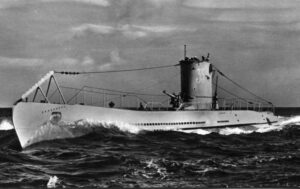 U35 was ordered at Germaniawerft in Kiel on 25 March 1935, laid down at Yard number 558 on 2 March 1936, launched on 24 September 1936 and commissioned on 3 November 1936. For her 1st patrol, she departed Wilhelmshaven on 9 September 1939. She was ambushed underway by HMS Ursula about 23 nmi (43 km; 26 mi) north of the Schiermonnikoog Island. She dodged her torpedoes and sailed around the British Isles to attack shipping. On 18 September, she attacked three fishing trawlers NWE of St.Kilda, sank two with gunfire, (326 GRT Arlita, 295 GRT Lord Minto) after confiscating their radios and fishing gear but allowing their crews to evacuate. The 3rd, Nancy Hague, was allowed to proceed, taking on the other crews on board. After 14:10 on 21 September, she attacked Convoy OA-7 SW off Scilly Is. She launched three but missed a destroyer and tanker, damaged the 6,014 GRT British tanker Teakwood.
U35 was ordered at Germaniawerft in Kiel on 25 March 1935, laid down at Yard number 558 on 2 March 1936, launched on 24 September 1936 and commissioned on 3 November 1936. For her 1st patrol, she departed Wilhelmshaven on 9 September 1939. She was ambushed underway by HMS Ursula about 23 nmi (43 km; 26 mi) north of the Schiermonnikoog Island. She dodged her torpedoes and sailed around the British Isles to attack shipping. On 18 September, she attacked three fishing trawlers NWE of St.Kilda, sank two with gunfire, (326 GRT Arlita, 295 GRT Lord Minto) after confiscating their radios and fishing gear but allowing their crews to evacuate. The 3rd, Nancy Hague, was allowed to proceed, taking on the other crews on board. After 14:10 on 21 September, she attacked Convoy OA-7 SW off Scilly Is. She launched three but missed a destroyer and tanker, damaged the 6,014 GRT British tanker Teakwood.
At 18:45 on 1 October 1939, while 42 miles off Ushant, U-35 stopped the neutral 2,239 GRT Belgian merchant ship Suzon, with 2,400 tons of pit props on board from Bordeaux to Cardiff. After inspection and crew evacuation, she was torpedoed and sunk.
On 13:15 on 3 October, 40 miles West of the Scilly Islands, U-35 stopped the 4,990 GRT Greek freighter Diamantis with 7,700 tons of manganese ore from Sierra Leone to Britain. She was boarded, book and cargo verified, and her crew had time to evacuate before she was sunk. However, she had two G7a torpedoes exploding prematurely, only a G7e worked. Because of the conditions of her lifeboats, Lott decided to take all crew members aboard due to the rough weather. On 4 October, U-35 was spotted, surfaced by the population of Ventry and Ballymore (County Kerry). She launched a dinghy with the 28 Greek sailors from Diamantis safely to shore.
She returned to Wilhelmshaven on 12 October, but Lott was reprimanded for his actions by the high command as to “endangered his crew”.
In Ventry the rescue of these sailors is still celebrated today with a plaque and yearly remembrance in front of Quinn’s Pub. This even included the former captain at first, Panagos Pateras.
For her Second war patrol, U35 left Wilhelmshaven on 18 November. Ten days later she was scuttled by its crew in the North Sea after a severe depth charge attack from HMS Kingston, Icarus, and Kashmir. Lord Louis Mountbatten was commanding the squadron, and in a very unusual way, stopped his ships for an extended period of time, sending boats to rescue the crew. So all 43 crewmen survived the war as POWs, a just end for a just submarine and very human captain.
 U36
U36
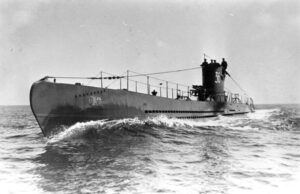 U36 was ordered on 25 March 1935 at Germaniawerft, Kiel, laid down on Yard number 559, 2 March 1936, launched on 4 November 1936 and commissioned on 16 December 1936 under command of Kptlt. Klaus Ewerth. In her first war patrol she was already at sea when the war broke out as she left Wilhelmshaven on 31 August, was in Kiel on 6 September and departed for good afterwards, patrolling the North Sea for three weeks, notably to catch vessels between Britain and Scandinavia. She sank two steamers, Truro and Silesia. The RN submarine HMS Seahorse claimed firing on U-36 and sunk her, but she missed. On 27 September Captain Fröhlich and crew captured the Swedish freighter Algeria, as a war prize, escort to Germany at the end of her patrol. She was berthed at Kiel until December.
U36 was ordered on 25 March 1935 at Germaniawerft, Kiel, laid down on Yard number 559, 2 March 1936, launched on 4 November 1936 and commissioned on 16 December 1936 under command of Kptlt. Klaus Ewerth. In her first war patrol she was already at sea when the war broke out as she left Wilhelmshaven on 31 August, was in Kiel on 6 September and departed for good afterwards, patrolling the North Sea for three weeks, notably to catch vessels between Britain and Scandinavia. She sank two steamers, Truro and Silesia. The RN submarine HMS Seahorse claimed firing on U-36 and sunk her, but she missed. On 27 September Captain Fröhlich and crew captured the Swedish freighter Algeria, as a war prize, escort to Germany at the end of her patrol. She was berthed at Kiel until December.
For her second war patrol she departed on 17 November 1939 with orders for her and U-38 to scout the location for Basis Nord, a secret German naval base for raids off the Kola Peninsula, provided by the Soviet Union. This required coded messages to be flashed to Soviet vessels patrolling the area, but U-36 never left the Norwegian Sea and was never heard of again. Indeed, on 4 December, just two days after leaving Wilhelmshaven, she was spotted off Stavanger by the British sub. HMS Salmon. She placed a single torpedo on her flank and she sank with all 40 of her crew lost. The same Salmon would also torpedo Leipzig and Nürnberg. She soon became one of the most successful S-class subs ever. U-38 continued and accomplished the mission, however.
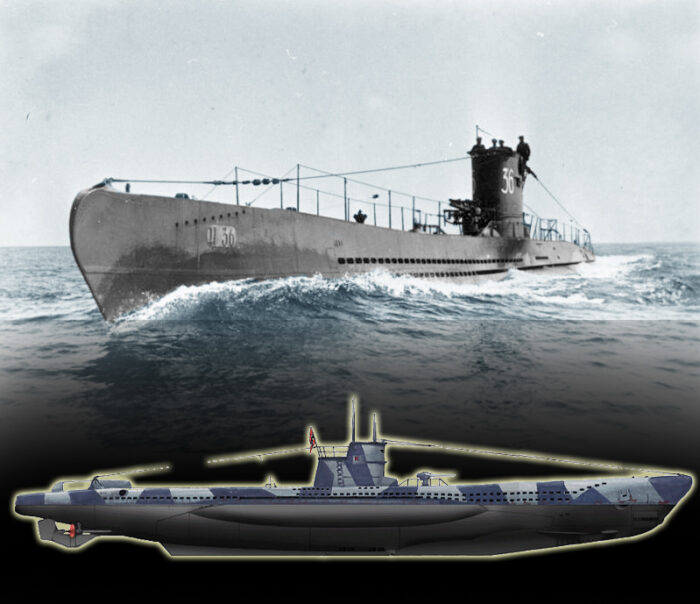
Read More
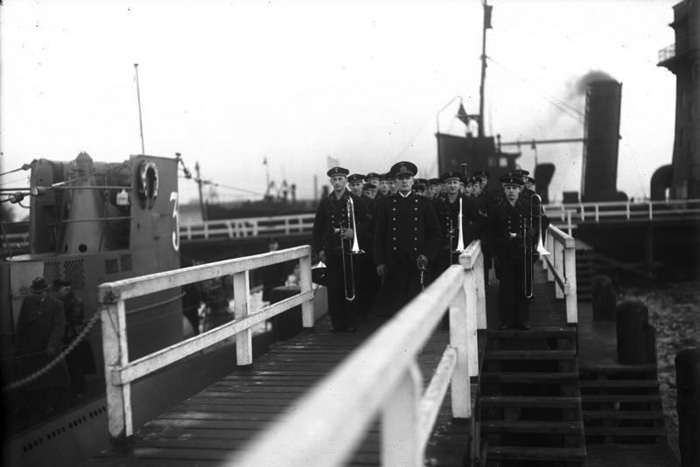
The commission of U36 i December 1936 (Bundesarchiv)
history.state.gov frus1919 Parisv13 ch14 subch2
sci.military.naval.narkive.com/ ww2-submarines diving depths
uboat.net/ viia.htm
navypedia.org viia
uboat.net/technical/
uboataces.com/
uboat-bases.com
USN Archives – Results of USN and German ASW campaigns ww2
wikipedia.org Type_VII
uboat.net/technical/guns.htm
uboat.net/ u-flak.htm
uboatarchive.net/ G7A-Plans.htm
bismarck-class.dk torpedog7at1.html
uboataces.com/ type-vii.shtml
archive.ph dutchsubmarines.com export_ivs
uboatarchive.net Manual Type VIIC
uboataces.com/ mines.shtml
on warhistoryonline.com
uboataces.com hydrophones.shtml
uboat.net/ torpedo_crisis
en.wikipedia.org Category German_Type_VIIA
Möller, Eberhard; Brack, Werner (2004). The Encyclopedia of U-Boats.
Gröner, Erich (1990). German Warships 1815–1945
Helgason, Guðmundur. U-Boat War in World War II
Busch, Harald (1955). U-Boats at War.
Rossler, Eberhard (1981). The U-Boat.
Stern, Robert C. (1991). Type VII U-boats.
Conway’s all the world’s fighting ships 1921-47
Type VII by Marek Krzysztalowicz
U-Boote by Jean-Philippe and Dallies-Labourdette
The U-Boat Type VII by Robert Cecil Stern
Type VII U-Boat (Anatomy of the Ship) by David Westwood
Model Kits:
on missing-lynx.com reviews/
kits on scalemates.com/

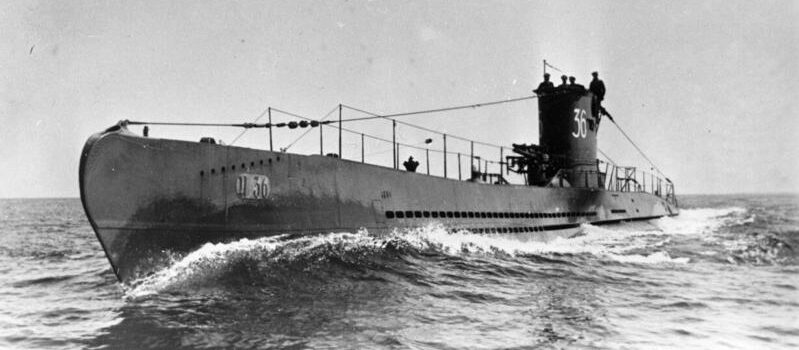


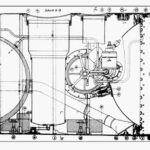

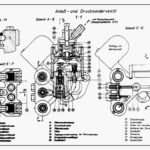
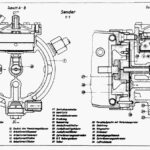
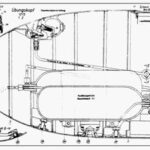

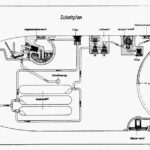
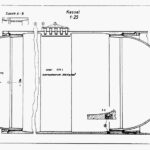
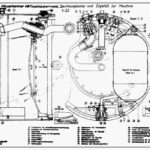



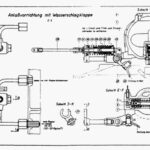
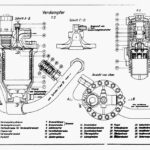


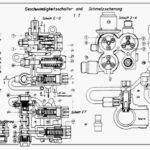
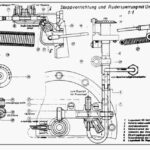
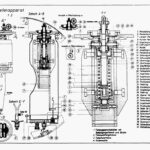

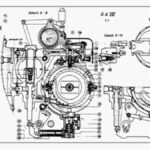
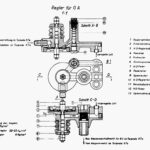
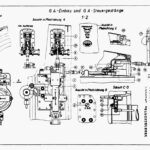

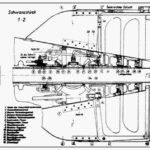
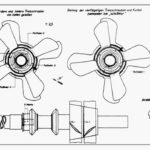
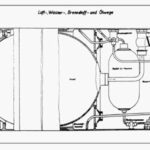
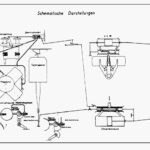
 Latest Facebook Entry -
Latest Facebook Entry -  X(Tweeter) Naval Encyclopedia's deck archive
X(Tweeter) Naval Encyclopedia's deck archive Instagram (@navalencyc)
Instagram (@navalencyc)


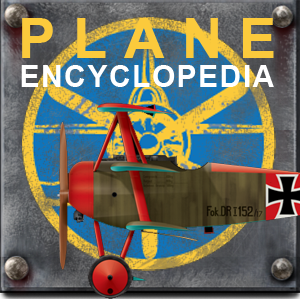
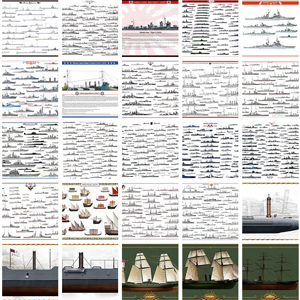

 French Navy
French Navy Royal Navy
Royal Navy Russian Navy
Russian Navy Armada Espanola
Armada Espanola Austrian Navy
Austrian Navy K.u.K. Kriegsmarine
K.u.K. Kriegsmarine Dansk Marine
Dansk Marine Nautiko Hellenon
Nautiko Hellenon Koninklije Marine 1870
Koninklije Marine 1870 Marinha do Brasil
Marinha do Brasil Osmanlı Donanması
Osmanlı Donanması Marina Do Peru
Marina Do Peru Marinha do Portugal
Marinha do Portugal Regia Marina 1870
Regia Marina 1870 Nihhon Kaigun 1870
Nihhon Kaigun 1870 Preußische Marine 1870
Preußische Marine 1870 Russkiy Flot 1870
Russkiy Flot 1870 Svenska marinen
Svenska marinen Søværnet
Søværnet Union Navy
Union Navy Confederate Navy
Confederate Navy Armada de Argentina
Armada de Argentina Imperial Chinese Navy
Imperial Chinese Navy Marinha do Portugal
Marinha do Portugal Mexico
Mexico Kaiserliche Marine
Kaiserliche Marine 1898 US Navy
1898 US Navy Sovietskiy Flot
Sovietskiy Flot Royal Canadian Navy
Royal Canadian Navy Royal Australian Navy
Royal Australian Navy RNZN Fleet
RNZN Fleet Chinese Navy 1937
Chinese Navy 1937 Kriegsmarine
Kriegsmarine Chilean Navy
Chilean Navy Danish Navy
Danish Navy Finnish Navy
Finnish Navy Hellenic Navy
Hellenic Navy Polish Navy
Polish Navy Romanian Navy
Romanian Navy Turkish Navy
Turkish Navy Royal Yugoslav Navy
Royal Yugoslav Navy Royal Thai Navy
Royal Thai Navy Minor Navies
Minor Navies Albania
Albania Austria
Austria Belgium
Belgium Columbia
Columbia Costa Rica
Costa Rica Cuba
Cuba Czechoslovakia
Czechoslovakia Dominican Republic
Dominican Republic Haiti
Haiti Hungary
Hungary Honduras
Honduras Estonia
Estonia Iceland
Iceland Eire
Eire Equador
Equador Iran
Iran Iraq
Iraq Latvia
Latvia Liberia
Liberia Lithuania
Lithuania Mandchukuo
Mandchukuo Morocco
Morocco Nicaragua
Nicaragua Persia
Persia San Salvador
San Salvador Sarawak
Sarawak Uruguay
Uruguay Venezuela
Venezuela Zanzibar
Zanzibar Warsaw Pact Navies
Warsaw Pact Navies Bulgaria
Bulgaria Hungary
Hungary

 Bundesmarine
Bundesmarine Dutch Navy
Dutch Navy Hellenic Navy
Hellenic Navy Marina Militare
Marina Militare Yugoslav Navy
Yugoslav Navy Chinese Navy
Chinese Navy Indian Navy
Indian Navy Indonesian Navy
Indonesian Navy JMSDF
JMSDF North Korean Navy
North Korean Navy Pakistani Navy
Pakistani Navy Philippines Navy
Philippines Navy ROKN
ROKN Rep. of Singapore Navy
Rep. of Singapore Navy Taiwanese Navy
Taiwanese Navy IDF Navy
IDF Navy Saudi Navy
Saudi Navy Royal New Zealand Navy
Royal New Zealand Navy Egyptian Navy
Egyptian Navy South African Navy
South African Navy






























 Ukrainian Navy
Ukrainian Navy dbodesign
dbodesign